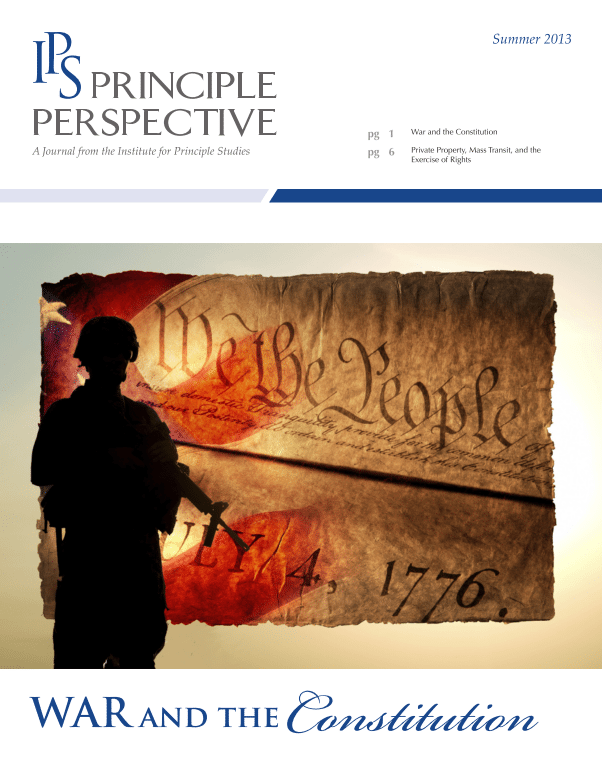War and the Constitution
In modern America, there is considerable confusion about the constitutional requirements related to matters of war. Some people believe that the Constitution gives the President extremely broad power in warmaking decisions, while others contend that the Constitution severely limits that power. Sadly, the majority of Americans simply don’t care what the Constitution says.
Most Americans are aware that our federal government is divided into three branches: the executive branch, the legislative branch, and the judicial branch. What is not as well known is that the first three articles of the U.S. Constitution define the roles and responsibilities of each of these branches. Article I defines the powers given to the legislative branch, Article II defines the powers of the executive branch, and Article III defines the powers of the judicial branch. The power to declare war is found in Article I, demonstrating that, contrary to the beliefs of many Americans, this power rests exclusively with the legislative branch of our federal government.
Much of our current constitutional confusion stems from our failure to understand the important distinction between declaring war and managing war. Some assume that the President, as commander-in-chief of the military, has the power to decide when to go to war, but this is not the case. Our Founding Fathers believed strongly in the separation of powers, and it should not surprise us that they applied this standard to matters of war. They wisely placed the decision about whether or not to go to war into different hands than those that might manage or prosecute the war, should it occur.
The result is that the Constitution charges the legislative branch with deciding when to use lethal force (Article I) and the executive branch with the job of managing the execution of that force (Article II), but only when deemed necessary by the legislative branch. This provides some level of protection against unnecessary or superfluous military engagements.
Read our entire in depth analysis by clicking the link below:
You will have access to the feature article in addition to topical articles
View Full Issue

